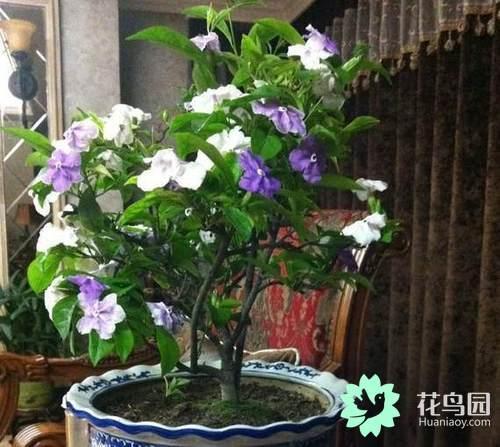Flowers will also change their faces and change colors when they disagree.

As the saying goes, there are all kinds of wonders in the world, and even the same flower will show different colors. In fact, flowers can also "change their faces." Today, let's take a look at the little secrets behind those flowers that can change color.
1. Bicolor jasmine
Bicolor jasmine usually blossoms in spring and autumn, each flower is purple at the beginning of blooming, then becomes light cyan, and finally becomes white, so it symbolizes yesterday, today and tomorrow. The reason for the discoloration of two-color jasmine is also relatively simple, the anthocyanins in the petals are more volatile, generally speaking, the clearer the weather, the faster the discoloration will be more obvious.
two。 Honeysuckle
Honeysuckle can be said to be the most common discolored flowers in life. Honeysuckle is a vine that usually blossoms in spring, usually white first and then yellow. Looking at honeysuckle in full bloom is the origin of the name honeysuckle.
3. Make a gentleman
So that the gentleman is also called the four gentlemen, it can show white, pink, red, sometimes can change color within a day. The principle of discoloration of a gentleman is similar to that of two-color jasmine. White flowers bloom at night, which can attract moths and turn bright red the next day. This is also to attract butterflies, bees and other animals to pollinate them, which is conducive to reproduction.
4. Get hibiscus three times
Three hibiscus open in autumn, the color of three hibiscus will change day by day, white, yellow, pink, red, it can be said to be the flowers with the most color changes in the world, its discoloration is also through the change of anthocyanins and acid in the petal cells.
- Prev

How does the enlightened succulent plant have such a strange form?
For many friends who have just entered the succulent pit, most of their impressions of succulent plants are beautiful and cute, and they are adorable at a glance. But what the editor tells you today is the strange side of succulent plants, their appearance and habits.
- Next

How to bag loquat?
Loquat bagging can not only keep the fruit in good appearance, reduce disease, but also avoid being eaten by birds and prevent sunburn. How to bag the loquat? What is the bagging technology of loquat? The young fruit of precocious loquat has thumbs at the beginning of January.
Related
- Wuhan Hospital Iron Tree Blooming Result Was Instantly Frightened by the Gardener Master
- Which variety of camellia is the most fragrant and best? Which one do you like best?
- What is the small blue coat, the breeding methods and matters needing attention of the succulent plant
- Dormancy time and maintenance management of succulent plants during dormancy
- Minas succulent how to raise, Minas succulent plant pictures
- What are the varieties of winter succulent plants
- How to raise succulent plants in twelve rolls? let's take a look at some experience of breeding twelve rolls.
- Attention should be paid to water control for succulent plants during dormant period (winter and summer)
- Watering experience of twelve rolls of succulent plants
- Techniques for fertilizing succulent plants. An article will let you know how to fertilize succulent plants.

